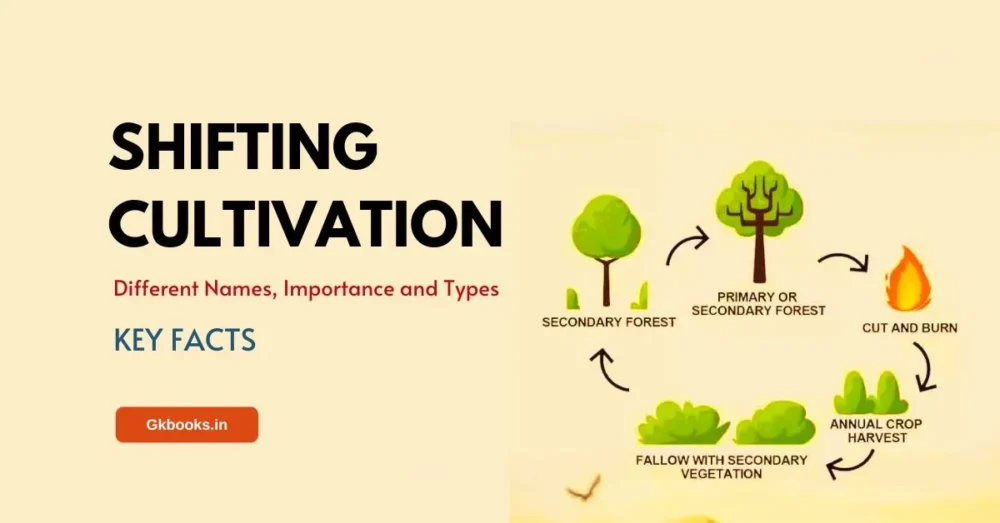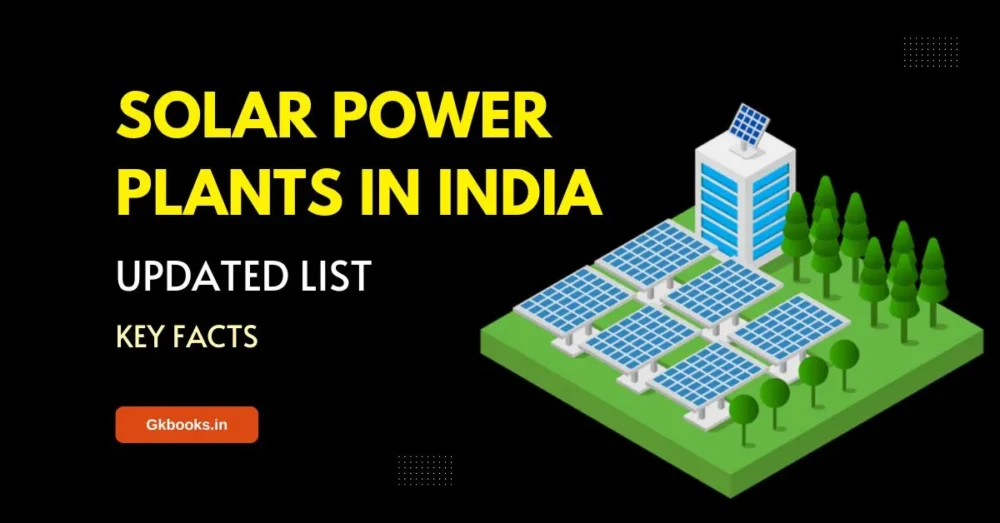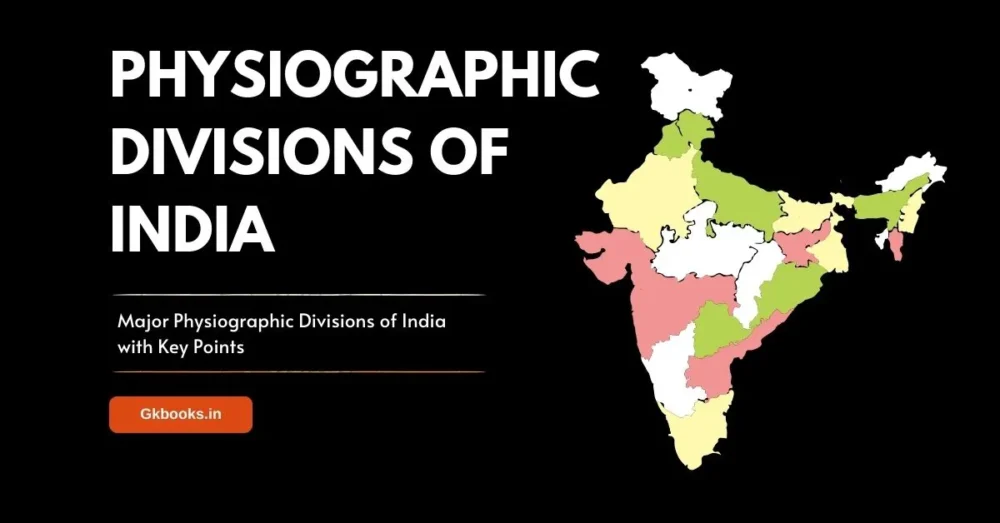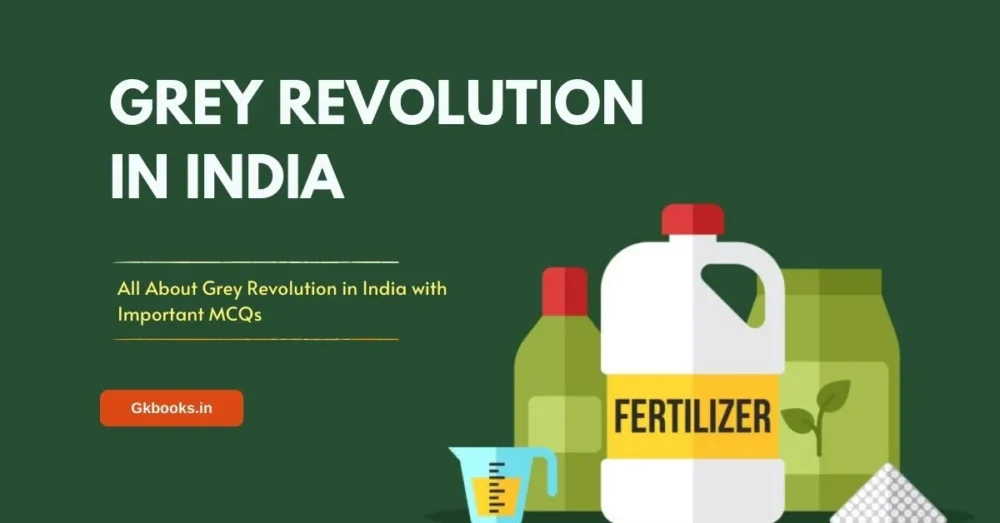Explore the Complete List of Agricultural Revolutions in India 1960-2024. India’s agricultural sector has witnessed remarkable transformations over the past six decades.
16 significant revolutions have marked this journey, each bringing about innovative practices and propelling the country towards greater food security and agricultural prosperity. Let’s take a closer look at these revolutions.
Can You Answer👇
✅ In 2024, which Agricultural Revolution’s Father received the Bharat Ratna Award?
A. Yellow Revolution
B. Green Revolution
C. Brown Revolution
D. Pink Revolution
Challenge yourself! Engage in extra MCQ practice—accessible at the conclusion of this topic.
Agriculture Revolutions in India
Throughout India’s history, significant shifts in farming practices have occurred, resembling pivotal moments termed agricultural revolutions. These revolutions illustrate the adaptability of Indian farmers and their ability to generate innovative ideas.
These periods of transformation blend traditional and modern farming methods, creating a mosaic depicting how our nation is nourished. Explore these distinct agricultural revolutions in India that act as a unique thread, contributing to the narrative of our evolving farming practices.
Significance and Importance
An agricultural revolution signifies a profound transformation in farming within a short span. Introducing new tools, concepts, or cultivation methods enhances farming efficiency and ensures an ample food supply for a growing population. It marks a significant shift that simplifies farming practices and aids the nation in producing more food.

Major Agricultural Revolutions in India from 1960-2024
An exhaustive compilation of Agricultural Revolutions in India is presented below, encompassing various dimensions and facets.
| Sl.No | Name | Father of the Revolution | Key Focus / Objective | Year | Food/Products | Challenges that Remain |
|---|---|---|---|---|---|---|
| 1 | Green Revolution | M.S. Swaminathan | Food Grains Production | 1960s | Boosted food grain yields | Sustainable water and land use |
| 2 | White Revolution | Verghese Kurien | Milk Production | 1970s | Higher milk production | Ensuring fair returns for dairy farmers |
| 3 | Blue Revolution | Dr Arun Krishnan | Fish Production | 1970s | Increased fish production | Overfishing and coastal habitat degradation |
| 4 | Yellow Revolution | Sam Pitroda | Oilseed Production, Mustard & Sunflower | Late 1980s | Boosted oilseed production | Enhancing productivity sustainably |
| 5 | Silver Revolution | Indira Gandhi | Egg Production, Poultry Production | 1980s | Expansion of egg and poultry industries | Disease management and animal welfare |
| 6 | Grey Revolution | – | Fertilizers | 1970s | Increased fertilizer usage | Balancing chemical use and soil health |
| 7 | Pink Revolution | Durgesh Patel | Onion, Pharmaceuticals, Prawn Production | 1990s | Improved production in respective areas | Quality control and market fluctuations |
| 8 | Brown Revolution | Hiralal Chaudri | Leather, Cocoa, Non-Conventional Products | – | Diversified agricultural products | Ensuring sustainability and ethical practices |
| 9 | Round Revolution | – | Potato Production | 1990s | Growth in potato cultivation | Storage and distribution challenges |
| 10 | Golden Revolution | Nirpakh Tutej | Fruits, Honey, Horticulture Development | 1990s | Growth in horticultural products | Post-harvest losses and supply chain issues |
| 11 | Protein Revolution | Coined by Narendra Modi and Arun Jaitley | Higher Production through Technology | Coined (2020) | Increased food production | Ensuring equitable access to technology |
| 12 | Silver Fiber Revolution | – | Cotton Production | – | Enhanced cotton yield and quality | Pest resistance and sustainability |
| 13 | Red Revolution | Vishal Tewari | Meat Production, Tomato Production | – | Increased meat and tomato production | Quality assurance and resource use |
| 14 | Black Revolution | – | Petroleum Product Production | – | Reduced dependency on imports | Managing environmental impacts |
| 15 | Evergreen Revolution | – | Integration of ecological principles | – | Improved sustainability of agriculture | Spreading awareness and adoption |
| 16 | Golden Fiber Revolution | – | Jute Production | – | Enhanced jute production | Market competition and synthetic materials |
Agriculture Revolution in India: Key Points
Green Revolution
- The Green Revolution or Third Agricultural Revolution
- Initiated in developed countries in the early 20th century, spread globally till the late 1980s
Technological Innovations
- Adoption of high-yielding varieties of cereals (dwarf wheat and rice)
- Widespread use of chemical fertilizers
- Pesticides and controlled irrigation
Key Contributors
- Role of Norman Borlaug, “Father of the Green Revolution,” and his Nobel Peace Prize
- Yuan Longping‘s contributions to hybrid rice varieties.
- M. S. Swaminathan, India’s main architect or the Father of the Green Revolution.
Round Revolution
- Focuses on improving the production of potatoes in India.
- Recognizes potatoes as a staple food consumed by all strata of society.
Government Adoption
- Adopted by the Indian government to enhance the growth and production of potatoes.
- Aims to ensure the widespread availability of potatoes, catering to the dietary needs of all.
Reasons Behind Round Revolution:
- Addresses the growing demand for potatoes in India.
- Aims to diversify and improve potato varieties.
Potato Facts
- Uttar Pradesh is the number one contributor to potato production, followed by West Bengal and Bihar.
- Potatoes are rich in starch and Vitamin B1.
- Considered a cash crop due to high marketable value per unit area.
- Introduction to India dates back to the 16th century by Portugal.
Dive Deeper: All About Round Revolution in India Key Points with MCQs
Grey Revolution
- Related to increased fertilizer production.
- Emerged post-1960s as a response to setbacks of the Green Revolution.
- Aims to improve upon the Green Revolution and address its shortcomings.
Sustainable Agriculture Solutions
- Agritech startup Grey Revolution focuses on developing sustainable food system solutions.
- Creates a platform for smallholder farmers to enhance yield and profitability.
India’s Approach
- As part of the Grey Revolution, India emphasizes using fertilizers to stimulate growth.
- Shifts focus from seed productivity to sustainable agricultural practices.
Brown Revolution
- Focus: Meeting the demand for high-quality, sustainable coffee from developed nations.
- Location: Primarily focused on the tribal areas of Visakhapatnam, Andhra Pradesh, India.
- Products: Primarily focused on coffee but includes leather and cocoa production.
Key aspects
- Environmentally friendly: Promotes organic farming practices, soil conservation, and forest protection.
- Socially responsible: Ensures fair trade for farmers, improves livelihoods and promotes tribal empowerment.
- Economic development: Aims to increase coffee production and exports, contributing to the regional economy.
- Initiator: Hiralal Chaudhari, the “Father of the Brown Revolution”.
Pink Revolution
- Denotes a revolution in technologies used in poultry and meat processing.
- Durgesh Patel is recognized as the Father of the Pink Revolution.
Scope of Pink Revolution
- Encompasses the poultry and meat sector, onion production, and pharmaceuticals.
- Focuses on leveraging India’s rich poultry and cattle population.
White Revolution
- Launched on January 13, 1970, by India’s National Dairy Development Board (NDDB).
- World’s largest dairy development program.
- Transformed India into the world’s largest milk producer.
- Surpassed the United States in 1998 with about 22.29 per cent of global output in 2018.
Leadership
- Dr. Verghese Kurien, Chairman and Founder of Amul, was named Chairman of NDDB by Prime Minister Lal Bahadur Shastri.
- Dr. Kurien was recognized as the father of the White Revolution.
Competitive Edge
- Skim milk powder allowed Amul to compete successfully with cow milk-based suppliers like Nestle.
Blue Revolution
- Government initiative for aquaculture industry growth.
- Originated in China, accounting for two-thirds of global aquaculture production.
Blue Revolution in India
- Launched during the 7th Five Year Plan (1985-1990).
- Fish Farmers Development Agency (FFDA) is sponsored by the Central Government.
- Intensive Marine Fisheries Program launched during the 8th Five Year Plan.
- Fishing harbours were established in Vishakhapatnam, Kochi, Tuticorin, Porbandar, and Port Blair.
Yellow Revolution
- Initiated in 1986-1987 in India.
- Aimed at boosting edible oil production, particularly mustard and sesame seeds.
- Goal: Achieve self-sufficiency in oilseed production.
Key Figures
- Sam Pitroda is acknowledged as the key figure behind the Yellow Revolution.
- Spearheaded advanced technologies and expansion of agricultural land.
Cultivated Crops
- Targeted oilseeds included linseed, castor, safflower, soybean, sunflower, mustard, groundnuts, and sesame seeds.
Protein Revolution
- Protein revolution compared to a technology-driven second Green revolution.
- Establishment of a Price Stabilization Fund with a corpus of Rs. 500 crores.
- A fund designed to assist farmers in managing market fluctuations.
- Introduction of Kisan TV to provide real-time information on innovative techniques.
- Kisan TV also focuses on water conservation and organic farming practices.
Black Revolution
- Government initiative to increase petroleum production.
- The plan involves accelerating ethanol production by mixing with petrol to create biodiesel.
- Ethanol is a renewable energy source obtained from molasses, a by-product of sugar production.
- The long-standing practice of blending ethanol with petrol in the USA and Brazil has existed for over 70 years.
- Blending ethanol with transport fuels offers better returns to farmers.
- Helps supplement scarce hydrocarbon resources.
- Environmentally friendly approach by reducing pollutants during combustion.
Golden Fiber Revolution
- Golden Fiber Revolution is associated with jute production in India.
- It gained prominence during the Industrial Revolution when jute became a significant raw material in the fabric industry.
- Processed jute continues to create robust threads and various jute products.
- The term highlights the pivotal role of jute in India’s industrial and economic landscape.
- Jute, often referred to as the “Golden Fiber,” contributes to the production of a wide range of products, including bags, textiles, and other eco-friendly items.
Sample MCQs on Agricultural Revolutions
Q1. During which period is the first Green Revolution in India often recognized?
A. 1975 -1978
B. 1951-1953
C. 1981-1983
D. 1966-1969
Answer –D. 1966-1969
Explanation-
Q2. The Green Revolution in India witnessed the introduction of high-yielding varieties (HYV) of seeds primarily for cultivating which crop?
A. Millets
B. Wheat
C. Oilseeds
D. Pulses
Answer –B. Wheat
Explanation-
Q3. The term Round Revolution is linked to the increased production of which agricultural product?
A. Eggs
B. Tomatoes
C. Potatoes
D. Onions
Answer –C. Potatoes
Explanation-
Q4. The Silver Fibre revolution is associated with the enhancement of production in which sector?
A. Milk Production
B. Meat Production
C. Cotton Production
D. Fruits Production
Answer –C. Cotton Production
Explanation-
Q5. Who is known as the Mother of Silver Revolution in India?
A. Durgesh Patel
B. Verghese Kurien
C. Harilal Chaudhary
D. Indira Gandhi
Answer –D. Indira Gandhi
Explanation-
Q6. In India, which state was selected as the initial site for the Green Revolution?
A. Tamil Nadu
B. Punjab
C. Bihar
D. Andhra Pradesh
Answer –B. Punjab
Explanation-
Q7. The Pink Revolution encompasses the production of which essential commodity?
A. Eggs
B. Tomatoes
C. Potatoes
D. Onions
Answer –D. Onions
Explanation-
Q8. Who holds the title of the Father of the White Revolution?
A. Norman Borlaug
B. Nirpakh Tutej
C. Dr. Verghese Kurien
D. M.S. Swaminathan
Answer –C. Dr. Verghese Kurien
Explanation-
Q9. The Black Revolution is primarily associated with the significant increase in the production of which resource?
A. Crude oil production
B. Grapes production
C. Oilseeds production
D. Coal production
Answer –A. Crude oil production
Explanation-
Q10. Who is acknowledged as the pivotal figure and often referred to as the Father of the Pink Revolution?
A. Verghese Kurien
B. Durgesh Patel
C. Harilal Chaudhary
D. Indira Gandhi
Answer –B. Durgesh Patel
Explanation-
"Please comment if you spot any errors in this post. I'll promptly correct and update the content. Additionally, feel free to provide feedback or suggest improvements to enhance the overall quality. Your input is valuable! 📝🤝 #FeedbackWelcome"
Sources:
- StudyIQ
- Adda247 Current Affairs
- Wikipedia
- Indian Geography Text Book (D.R Khullar)
More Indian Geography Topics:










